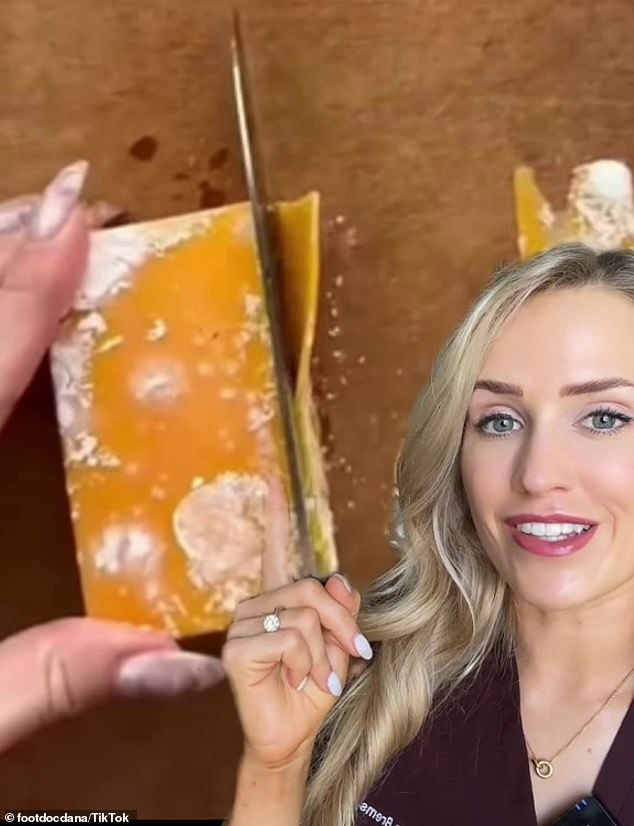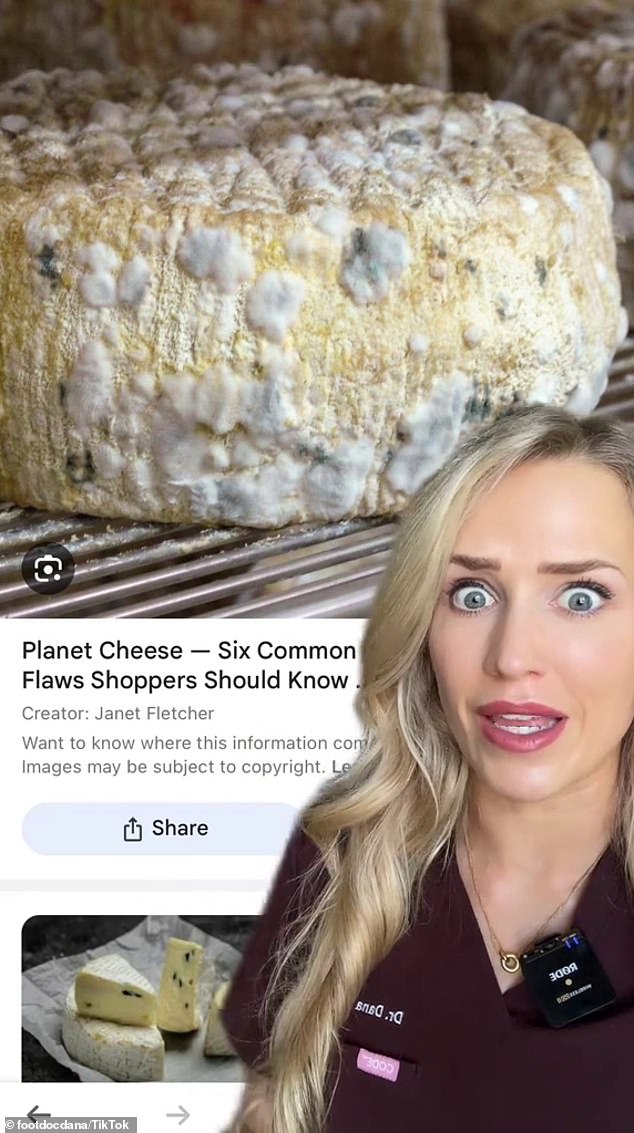Cheese has become a “luxury purchase” for many as the cost of living crisis hits Australia, but those trying to prolong its life by removing mould may pay the price.
American surgeon Dr. Dana Brems has warned against removing visible mould from cheese and eating the rest, even though many have done so for years to save money.
While it may be tempting to grab a knife to cut through a moldy slice of cheddar or brie, there are a few things you should keep in mind if you don’t want to end up with nausea, vomiting, or allergic reactions.
American surgeon Dr Dana Brems has warned against removing visible mould from cheese and eating the rest, even though many have done so for years to save money.
“Mold is like an iceberg where you can see some chunks at the top, but deeper down there is more mold hidden that you can’t see with the naked eye,” Dr. Brems said.
He said those looking to salvage their dairy products should distinguish between softer and harder varieties of cheese.
“If you have a hard cheese like cheddar, you can cut at least an inch around and below the moldy spot… the cheese should be fine to eat because the mold doesn’t penetrate as much into these dense cheeses,” he said.
But the medical expert advised that it will be necessary to wash the knife between cuts if cross-contamination problems are to be avoided.

He said those looking to salvage their dairy products should distinguish between softer and harder varieties of cheese.
Dr Brems said softer cheeses such as blue cheese, brie, camembert and gorgonzola are much harder to save once unsightly mould spores appear.
“With softer cheeses, like Brie or cottage cheese, if you see mold, you can’t tell how deep it actually penetrates,” he explained.
‘In addition, these cheeses have a higher water activity, so it is possible that hydrobacteria will grow along with the mold.
“If you see mold on a soft cheese, it all goes straight into the trash.”
The doctor said any grated or sliced cheese that has become moldy should also be thrown away immediately and not consumed.

Dr Brems said mould growing on softer cheeses carries a higher risk of causing nausea or vomiting, and any soft cheese with visible mould should be discarded and not consumed.
Dr. Brems added that if you have a compromised immune system or are allergic to mold, it’s best not to take any risks by eating rotten cheese and just throw it away.
Australian food scientist Gary Kennedy agrees with Dr Brems that soft cheeses become dangerous once mould forms.
“Mold is like a blue bottle: the part you see on top you can touch, but the parts below are the poison,” he said.
Dr Kennedy added that the same goes for any soft foods, such as jam and tomato sauce – it is never safe to remove the mould and eat the rest.
He explained that bread is in the intermediate category between soft and hard foods.
He said if a slice of bread shows signs of mold, remove a few slices from each side to make sure you’ve removed the roots, and the rest should be safe to eat.
Dr. Kennedy warned that repeated exposure to mold can have similar effects on the body as chemical poisoning, and is not something to be taken lightly.
Many Europeans and Australians were outraged that they were being advised to throw away mouldy cheese.
“It’s a totally American view and it’s not correct. If the mold is black, red or orange, then yes, it’s garbage. You can remove white, blue, green and yellow mold and nothing happens, or it even improves,” said one cheese seller.
“In France we eat a lot of mouldy cheese. Food laws in Europe are also very strict and I have never heard of a medical case of food poisoning due to mouldy cheese,” another agreed.
But Dr Kennedy argued that the mould we have in Australia is different from mould in other parts of the world and is not worth messing with.

